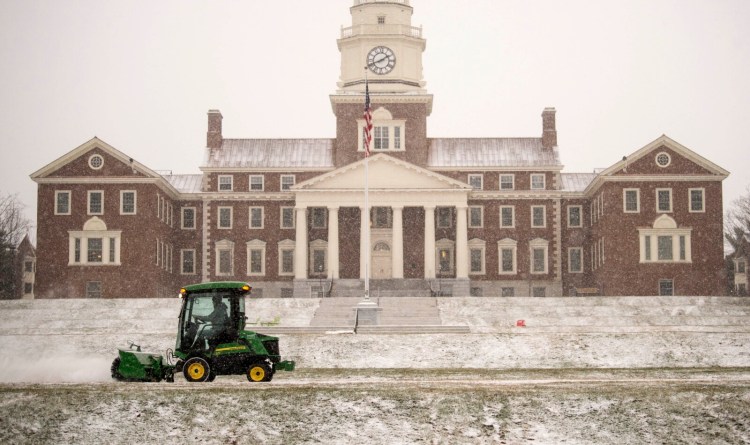When Maine’s economy was driven by manufacturing, economic output came from every corner of the state.
But as we have transitioned into a service economy, activity is centered in one place, the Portland area, which is why about half of Maine’s gross domestic product comes from just two of its 16 counties: Cumberland and York.
That was the finding of a recent analysis by the federal Bureau of Economic Analysis, but it was hardly news to anyone who has lived in the state and worried about “two Maines,” one prosperous and the other poor.
Since people generate economic activity, these data are just another way of saying that about half of Maine’s population lives in the southern part of the state. But that doesn’t explain why Cumberland County generates a third of the state’s output with less than a quarter of its people. And it doesn’t explain why the population is shrinking in most parts of Maine, or what will happen to the people who live in rural areas as more of them age out of the workforce. And it doesn’t say much about the future of children who live in areas of decline and what kind of opportunities will be available to them.
That’s why the state’s economic development efforts have long focused on trying to bring back the big employers, or at least hold on to the manufacturing jobs that still exist. But there are other ways to build the state’s economy using building blocks that already exist.
One instructive example is Colby College, which has been engaged in aggressively investing in its home city, Waterville.
A private liberal arts college might not seem like an engine of economic growth. Most of its students come from out of state, and most of them leave Maine when they graduate. These colleges tend to be tax-exempt islands of privilege, closed off from the outside world.
But under the leadership of President David Greene, Colby has taken a different approach. The school was already the city’s second biggest private employer, with about 900 employees who earned, on average, $63,000 a year. But it has added to its impact by building a dormitory in downtown Waterville, among other investments. Colby has committed to buying materials from local vendors, and its new buildings are on the city tax rolls.
In a state where workforce development is the biggest economic challenge, Colby’s contribution has made a difference. Waterville’s population grew by 6 percent between 2010 and 2017. During the same period, there was a 2 percent decline in Kennebec and Somerset counties. By the college’s own analysis, it has generated $1.5 billion in economic activity in the state, mostly in the Waterville region.
Colby’s mission is not to build the local economy, but Greene says the interests of the college and the city are closely aligned. Colby’s mission to research and educate requires attracting talented faculty and students from all over the world, in tight competition with other institutions. Being in a healthy and vibrant community makes it easier to do that. And a commitment to community provides a more complete education for Colby students. To live in the downtown dorm, students have to commit to providing community service, and there are Colby volunteers in the city’s schools and fire department as a result.
“Our graduates learn that they can and should make a difference in their community,” Greene said on a recent visit to the editorial board.
A century ago, wealthy industrialists made the same commitment to building communities, funding schools, hospitals, parks and other civic projects to benefit their workers. Now private colleges, research centers, hospitals and other nonprofits have the opportunity to invigorate the parts of the state that have been left behind by the economic transition.
As our population ages, the state’s future relies on institutions that can attract and retain people who want to live and work here. What’s happening at Colby College shows what can and should be done.
Send questions/comments to the editors.



Success. Please wait for the page to reload. If the page does not reload within 5 seconds, please refresh the page.
Enter your email and password to access comments.
Hi, to comment on stories you must . This profile is in addition to your subscription and website login.
Already have a commenting profile? .
Invalid username/password.
Please check your email to confirm and complete your registration.
Only subscribers are eligible to post comments. Please subscribe or login first for digital access. Here’s why.
Use the form below to reset your password. When you've submitted your account email, we will send an email with a reset code.